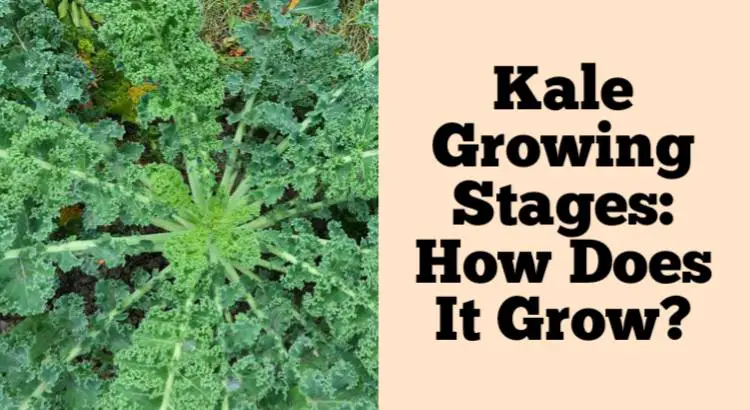Kale Growing Stages. Kale (Brassica oleracea, var. acephala) grows from seed and goes into several stages of growth. This plant grows in cooler climates and its biennial which means it completes its life cycle in two years.
But how does kale grow from seed to maturity?
Kale Growing Stages
Stage 1. Seed
Kale seeds have different colors. Some seeds are gray, orange, reddish, and black. Also, the seeds are very small and round in shape. The kale seeds came from the seed pod. When the parent kale plant produces pods, seeds grow inside of it and become mature after.
High-quality seeds have more chances to germinate. It will sprout fast since the seeds are small which is common, especially for plants that have very small seeds.
Stage 2. Germination
After planting the kale seeds, they will germinate in about 5-10 days. Sometimes it germinates faster and sometimes slower. A tiny root will come out from the seed, a short and thin stem, and two tiny leaves will also emerge. A small plant will come out from the soil in a few days.
The kale seeds will germinate fast when the soil is moist. The water helps the seed to sprout that is why watering the soil after planting the seeds is important. Some factors may affect the speed of germination like weather, quality of seeds, etc.
Stage 3. Seedling
Once the kale seeds have been germinated, they will turn into seedlings. The kale seedlings will grow more short and more tiny roots and have more leaves. The seedlings don’t have stems and it’s just roots and leaves.
During this phase, the seedlings need a few hours of sunlight and an increase in watering. Those elements will help them grow bigger and taller. It is common to grow kale seeds in a seedling tray and do transplanting after but it can also be grown directly in the soil.
If the seedlings are growing in a seedling tray they can be transplanted once they have enough size. It can take around 15 to 20 days to be transplanted. Sometimes they can be moved much earlier.
Stage 4. Vegetative Growth
After a few weeks, the kale plants will become more mature. They will have a lot of roots and more leaves. The plant needs more sunlight, water, and nutrients.
At least six hours of sunlight per day and around 1 inch of water per week, and fertilizer with a ratio of 5-10-10 or organic fertilizer is enough for the plants to grow.
When the kale plants become more mature, the outer leaves can be harvested. New leaves will grow on the center of the plant and those leaves on the outer become more mature and they can be cut from the plant and used in cooking.
It will take about 55-75 days to grow kale and harvest but sometimes it can be quicker depending on how the plants are cared for.
Stage 5. Flowering And Pollination
Kale plants are biennial and they will continue to grow in year two. The plants need a dormancy period which makes them produce flowers. It will start growing long flower stalks in the middle of the plant and yellow flowers will then grow on them.
When kale plants start flowering the leaves become bitter. In order to prevent leaves from becoming bitter, flowers must be cut off from the plant. But in order to get seeds, the flowers must keep growing on the plant.
The kale plants are not self-pollinating. They are self-incompatible and seeds will not be produced when only one kale plant is grown. In order for the flowers to be pollinated, another kale plant must be grown near it.
The kale flowers rely pollination on the pollinators like bees. The bees will gather nectars to the flowers and the pollen will stick to their feet and other parts of the body. When those bees move to other flowers, the pollen can be moved and pollination can happen.
Aside from pollinators, manual pollination can also be done by using a small brush and moving pollen into flowers or by getting a flower and transferring the pollen to other flowers.
Stage 6. Seeding
When many flowers are pollinated, more seeds will grow on the stalks. The flowers will turn into pods. Each pod has a few seeds. During the early stage, the pods are short and green. But over time the pods increase in length, become mature and grow few seeds.
The pods take time to mature. It will take them a few weeks or months to grow before you can save kale seeds. When the pods are turning yellow they are near to mature. And once those pods dry the seeds can be collected.
Before the pods dry, the plant slowly stops growing and it does not grow any leaves, and most parts of it also dry which indicates that the life cycle of kale ends.
The Life Cycle Of Kale: Kale Growing Stages
The kale life cycle starts from a seed, the seed germinates, it becomes a seedling, becomes mature, produces flowers, produces seeds, and ends its cycle in year two.

